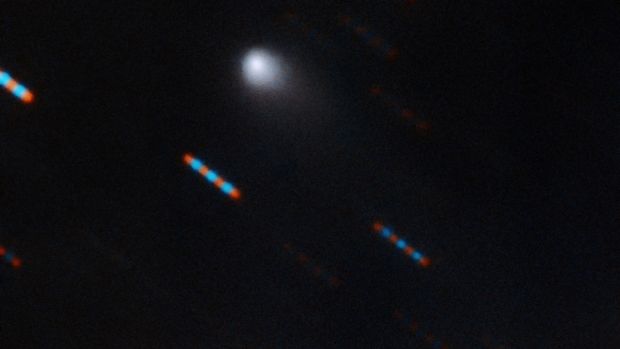Scientists say they have made a historic discovery after detecting gas molecules in a 4.6 billion year old comet which has tumbled into our solar system from another star.
Professor Alan Fitzsimmons of Queen’s University Belfast and colleagues used the 4.2-m William Herschel Telescope (WHT) on La Palma in the Canary Islands to detect this gas in 2I/Borisov, a comet of interstellar origin discovered on August 30, 2019 by amateur astronomer Gennady Borisov from Crimea, Ukraine.
“For the first time we are able to accurately measure what an interstellar visitor is made of, and compare it with our own Solar System,” Professor Fitzsimmons said.
The astronomers observed 2I/Borisov on September 20, 2019. At the time of the observations, the comet was 2.66 AU from the Sun and 3.25 AU from Earth.
“2I/Borisov appears to be similar but slightly less active than many long-period comets — such as C/2013 R1 (Lovejoy), C/2013 A1 (Siding Spring) and C/2014 W2 (PANSTARRS) — observed at similar distances,” they noted.
Combining the WHT spectra with filtered images of the comet obtained with the TRAPPIST-North telescope in Morocco, the team also measured the amount of dust being ejected by 2I/Borisov, and placed limits on the size of the central nucleus.
“Assuming that the properties of 2I/Borisov are similar to regular comets, it implies that the nucleus may be between 0.43-2.05 miles (0.7-3.3 km), is ejecting large grains, and if it is on the small end, the comet likely has a large fraction of the surface active,” the researchers said.
They concluded that the most remarkable thing about 2I/Borisov is that it appears ordinary in terms of the gas and dust it is emitting. It looks like it was born 4.5 billion years ago with the other solar system comets, yet has come from an unidentified stellar system.















